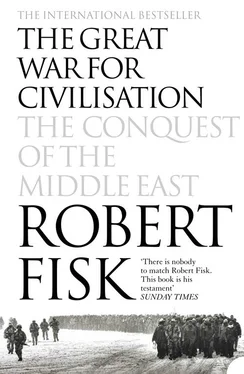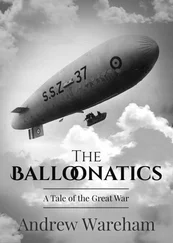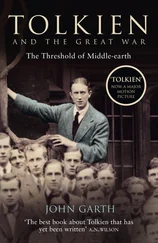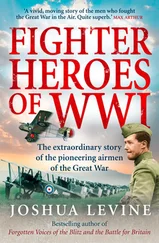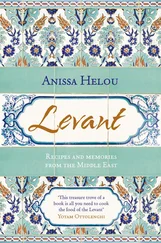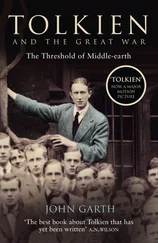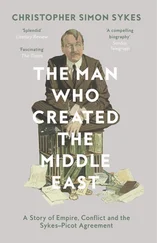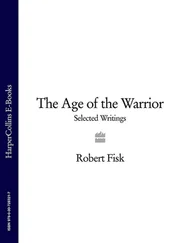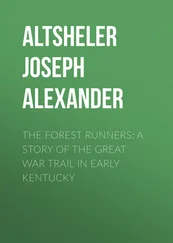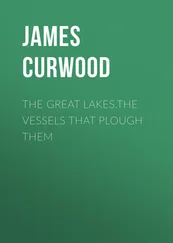They are nearly all young and they are honoured, publicly at least, with that mixture of grief and spiritual satisfaction so peculiar to Shia Islam. Take Ali Nasser Riarat. He was only twenty-one when he was killed at the battle of the Majnoon Marshes west of Howeiza in 1986; his photograph, pinned inside a glass-fronted steel box above his remains, shows him to have been a slim, good-looking youth with a brush moustache. His gravestone contains a message to his father Yussef, and to his mother:
Don’t cry mother, because I am happy. I am not dead. I remember all that you have done for me. You gave me milk and you wanted me to sacrifice my life for religion. Dear father, don’t cry and don’t beat yourself because you will be proud when you realise I am a martyr …
Several other inscriptions express similar sentiments. Even the flowers laid on the grave of a young soldier called Zaman near the cemetery-keeper’s hut carry such a declaration. ‘We congratulate you upon your martyrdom,’ it says, signed by ‘students and staff of the Tehran University of Science’. Could there really be such joy amid the graves of Chasar? Those cruel steel boxes above the dead contain fresh flowers and plastic doves and real steel-tipped bullets, but the snapshots show the young men who die in every war, laughing in gardens, standing with parents outside front doors, perched on mountain tops, holding field binoculars. Lutyens would have understood the waste of 25-year-old Sergeant Akbazadeh, who died in 1982 in Khorramshahr; of Mehdi Balouoch – a hand grenade carved on his gravestone – who was twenty-three when he was killed in Zakdan; of Mehrdrodi Nassiri, aged twenty-five, who was shot at Mehran in July of 1986. A 24-year-old who died outside Basra a few days before – perhaps in the same Battle of Fish Lake which I had witnessed – was pictured with his two little girls, one with her hair in a bow, curled up in his arms before he went to the front.
Was there no sense of waste? A man in his forties, bearded, unsmiling, shook his head. What of Owen’s question about doomed youth? What passing-bells for these who die as cattle? ‘I only met one man who spoke like that,’ the Iranian said. ‘He was an old man in hospital. He had his legs and one arm blown off by a bomb near Ahwaz. He had lost an eye. The bomb had killed his wife and children, his sisters and his brothers. He said he thought Saddam and Khomeini were both out for what they could get and did not care about their people. But he was the only man I ever heard who said those things.’
Outside the chilly, intimate cemetery, there stood a shop selling books about martyrdom. Inside was a young Revolutionary Guard who had that day returned from the southern front. His name was Ali Khani. What did his parents feel when he was away? ‘I have three brothers as well as me at the front,’ he replied. ‘My mother and father know that if I am martyred, I will be still alive.’ But did his parents not wish him luck – not tell him to ‘take care’ when he left for the war? ‘No,’ he said, a slight smile emerging at such Western sentiment. ‘They believe it is God’s wish if I die.’ But would his parents not cry if he died? Ali Khani thought about this for a long time. ‘Yes, they would,’ he said at last. ‘And so did the Prophet Mohamed, peace be upon him, when his baby son Ibrahim died. But this is not a sign of weakness or lack of faith. It is a human thing.’
CHAPTER EIGHT
Drinking the Poisoned Chalice
It is a long way from Washington to the Mossan Food and Fruit Cold Store in Bandar Abbas. The Pentagon’s clinical details of the last flight of Iran Air IR655 on 3 July 1988 cannot reflect the appalling human dimension of the charnel house in which I am standing, where three-year-old Leila Behbahani lies in her cheap, chipboard coffin. She was a very little girl and she still wears the small green dress and white pinafore in which she died three days ago when the United States Navy missile struck the Iranian Airbus over the Gulf, killing Leila and her 289 fellow passengers. She was pulled from the water only minutes after the explosion and she looks as if she has fallen asleep, her left wrist decorated with two bright gold bangles, her feet still in white socks and tiny black shoes. Her name is scrawled in crayon on the coffin lid that is propped up beside her. Her equally small brother – a dark-set, handsome boy with very short black hair – lies a few inches from her, cradled inside another plywood coffin.
Only the ice in their hair proves that they are awaiting burial. The central cold storage hall of the fruit depot is strewn with the same pale wooden coffins. ‘Yugoslav,’ it says on one. ‘Still unknown’ on another. In a corner, a middle-aged man is peering at some corpses. He recognises three members of his own family – two he cannot find – and an Iranian in a pair of jeans trundles into the hall with three more coffins piled haphazardly on a trolley. There are fifty-eight intact corpses here, fringed by a row of human remains so terrible that they could only be described with accuracy in a doctor’s report or a medical journal. Limbs, torsos, heads – eyes open-lie half-folded in blankets and plastic sheets. Iranian Pasdaran, normally the most voluble of revolutionaries, are reduced to silence. ‘Come, you are a lady,’ one says to a female reporter. ‘Come and see this woman who was killed.’ There is tampering in a coffin and a woman’s face, pale with wet hair, emerges through the plastic sheets.
Yet if this might seem in Western eyes a gesture of bad taste, an intrusion into grief, there is no avoiding some terrible conclusions: that so many of the dead – sixty-six – were children, that some of the coffins are so very small, that one twenty-year-old girl lies in the same wooden box as her year-old baby. Fatima Faidazaida was found in the sea three hours after the Americans shot down the plane, still clutching her child to her breast; which is why the baby, Zoleila-Ashan, is beside her now. ‘That is why we put them in together,’ an Iranian official says quietly. ‘We found them together so they must stay together.’
I come across another middle-aged man clutching a handkerchief to his face, walking unsteadily through the cold store, looking for his relatives. Several corpses he rejects; though terribly disfigured by the blast of the two American navy missiles that destroyed the aircraft, the bodies are clearly unknown to him. Only later does he discover his sister and brother-in-law beneath some plastic and kneel to touch their faces gently, weeping as he does so. Just a few hours ago, President Reagan has stated publicly that he has apologised enough for killing all these innocent people. His expressions of regret, he tells the world, are ‘sufficient’.
It is extraordinary here in the boiling southern Iranian port of Bandar Abbas how the official explanations of condolence, sorrow and self-absolution in Washington seem both hollow and opportunistic. What in Washington is called a ‘tragedy’ – as if some natural disaster overwhelmed these dead airline passengers around me – seems in Bandar Abbas to be an outrage. In the United States, it was possible for newspaper editors to suggest that the Airbus might have been on a suicide mission, that the pilot was deliberately trying to crash his passenger-packed airliner into the American frigate that shot it down. Even my own paper, The Times , has disgracefully made the same claim. But in Bandar Abbas, where the pilot’s friends and colleagues have spoken openly to me without official prompting, these suggestions are offensive, obscene. An entire family of sixteen Iranians were on the Airbus, travelling to a wedding in Dubai, the children in their wedding clothes. They are still dressed in the same bright, joyful colours in the coffins in the cold store as Reagan sends a letter to Congress announcing that he now regards the matter of the Airbus destruction as ‘closed’.
Читать дальше
